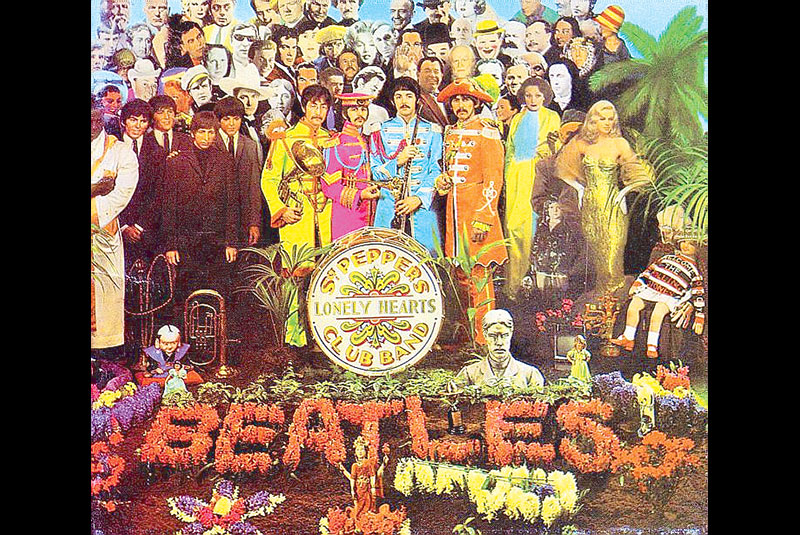Sgt. Pepper’s album turns gold

SGT. PEPPER’S A: Graphic artist Peter Blake’s original cover design
MANILA, Philippines - Alvin Sanoff, author of The Saturated Self, Dilemmas of Identity in Contemporary Life, referred to the Beatles as “perhaps the first important indicator of modernism’s demise.” This death ushered in what became known as the age of post-modernism in the ‘80s, which was tagged as cross-culturalism in the ‘90s or multiculturalism in the New Millennium.
Seduced by the potency of mind-altering substances, John Lennon, Paul McCartney, George Harrison and Ringo Starr associated with fellow believers in drugs’ powers to provide recreation and genius. As a direct reaction of the trouble-ridden concert in Manila on July 4, 1966, the Beatles collectively decided to stop touring. The ambition for continued dominance of popular music, however, made them receptive to record producer George Martin’s solicitations for experimentation.
No longer a close-knit group, the Beatles became creative vagabonds. McCartney, who had taken it upon himself to be the group’s creative leader, thought of imagining an alter ego group since they were tired of being the Beatles. He found the solution in the funky Sgt. Pepper’s Lonely Hearts Club Band. At a time when they felt capable of doing anything and being distinguished for it, they entered the Abbey Road recording studios and came out with a masterpiece, the Sgt. Pepper’s Lonely Hearts Club Band album, attributed as an artistic triumph, for sure, for McCartney.
The Beatles reached their artistic peak by refining their influences and coming up with a relatively superior album. It became the ultimate example of the possibilities of rock. Its acoustic, percussion and vocal components drastically redefined it. The electronic texture, the use of classical music instruments and the exuberant production broke rock traditions. The album as art was born.
Its revolutionary neon yellow and red gatefold cover says it all: Life-sized, colored cutouts of The Beatles with their favorite people — from Mahatma Gandhi to Adolf Hitler, from Joan Baez to Mae West, from Dylan Thomas to Bob Dylan — arranged with their live costumed image as photographed by graphic artist Peter Blake to look like an after-concert souvenir photo. The suggestion is clear: The Beatles was the totality of each member’s influences, and whatever philosophies and pretensions they represented, formalizing their declaration as “White Negroes.”
Released on June 1, 1967, the Grammy Awards gave it the Album of the Year, the first rock album to win it, and Best Contemporary Album in the 1968 awarding ceremonies. This year, it turns gold.
Its tracks are Sgt. Pepper’s Lonely Club Hearts Band, With A Little Help From My Friends, Lucy In Sky With Diamonds, Getting Better, Fixing A Hole, She’s Leaving Home, Being For the Benefit Of Mr. Kite, Within You Without You, When I’m Sixty-four, Lovely Rita, Good Morning Good Morning, Sgt. Pepper’s Lonely Hearts Club Band (Reprise) and A Day In The Life.
Lennon delivers the album’s ultimate message, “I’d love to turn you on...” and proceeds to another crescendo, an overwhelming high.
- Latest
- Trending




























